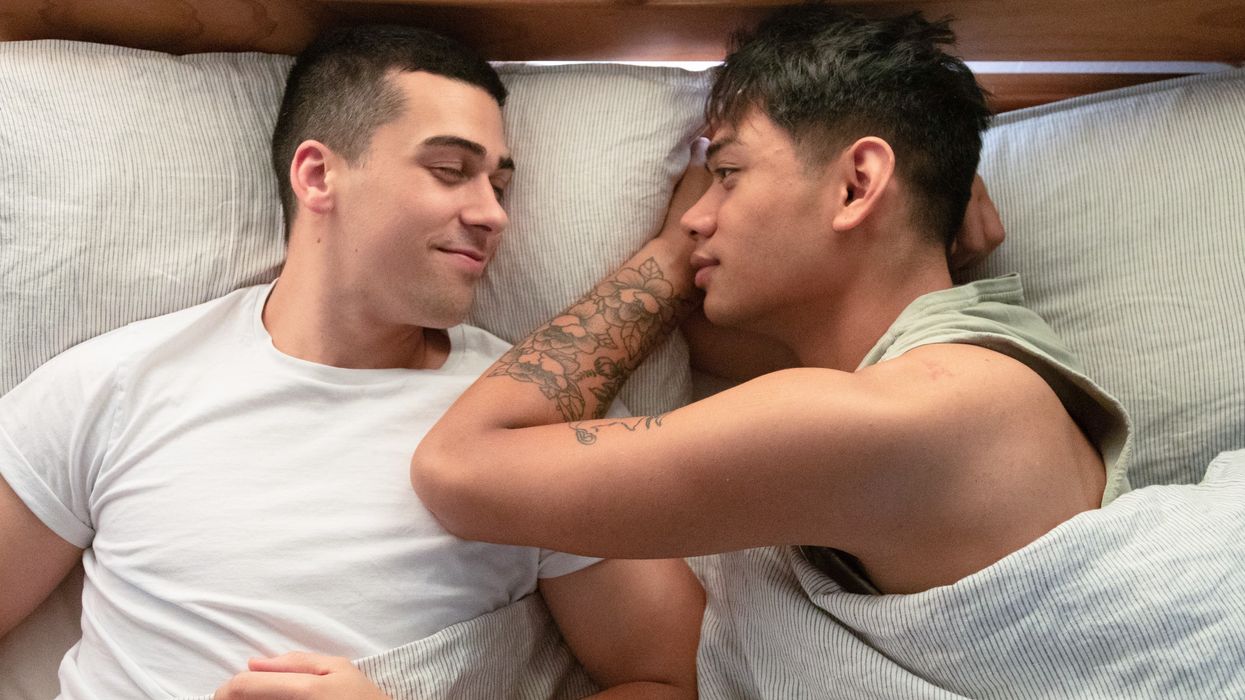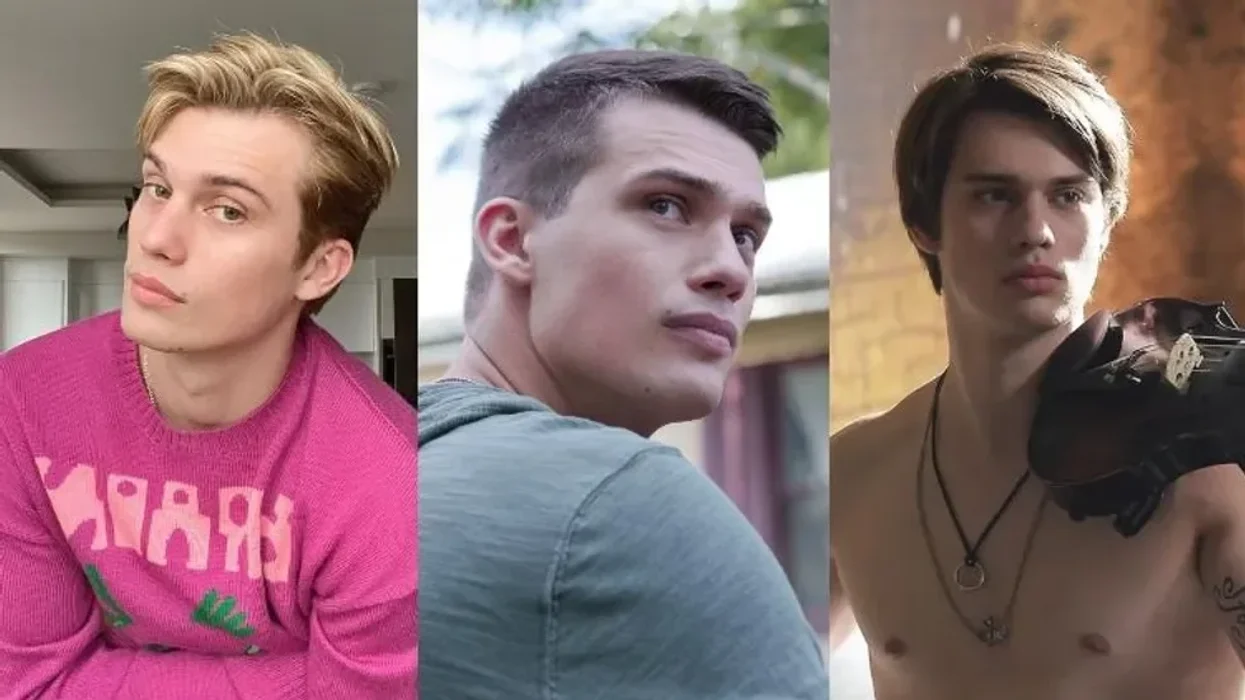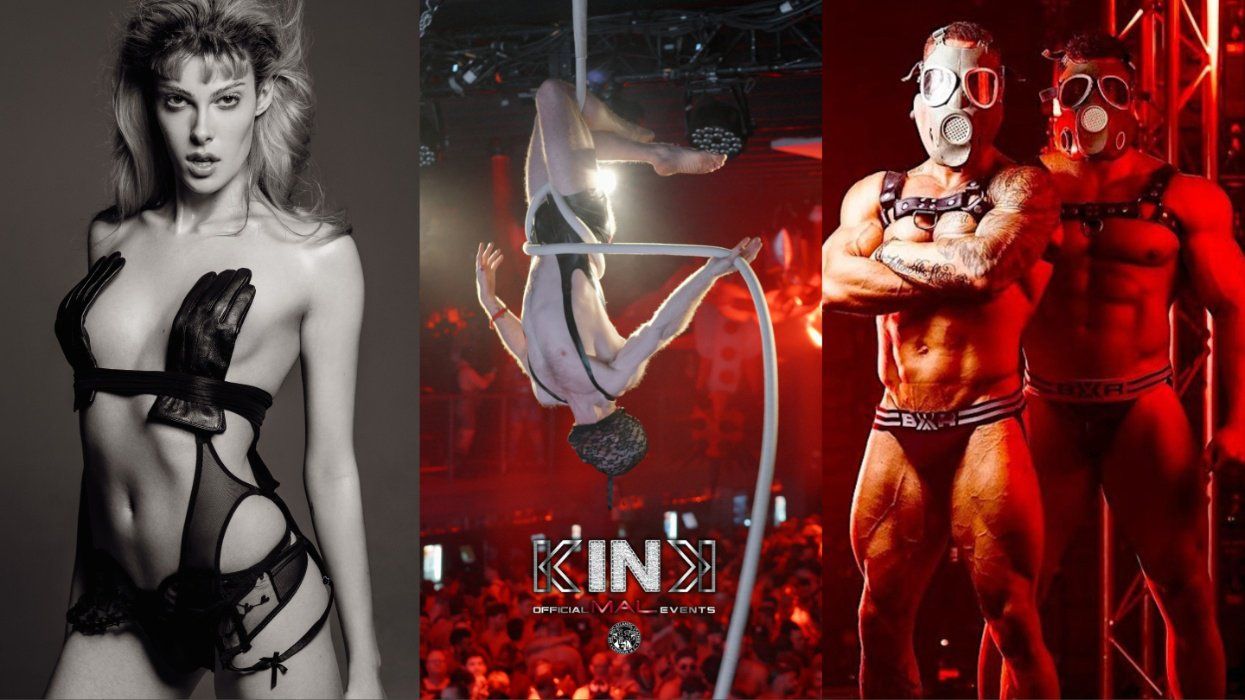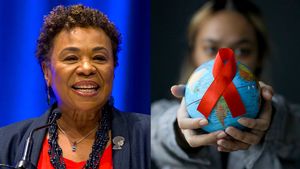Twilight, True Blood, Vampire Diaries… Vampires are all the rage in the entertainment world right now, but the obsession is hardly a new phenomenon. These pale, immortal monsters have been the object of lust and legend for centuries. One theme consistently interwoven into the stories of bewitching blood-suckers is the titillating and torrid portrayal of the lesbian vampire.
True Blood’s lesbian vampire queen Sophie-Ann (played by Evan Rachel Wood) and the cheesy exploitation horror flick Lesbian Vampire Killers are only a few of the latest examples of a long history of lesbian vampires in literature, film and television. Folk tales of vampire-like creatures have been in existence virtually since the beginning of human civilization, although the term “vampire” did not come into popular use until the 18th century. And where you find legends of vampires, you are almost always going to find corresponding tales of female bloodsuckers who prefer to snack on their own sex.
Since the ancient days of Greek, Roman and Egyptian mythology, hints of homosexuality and bisexuality have always hovered at the edges of legends of the undead. Centuries later, the myth still prevailed when 16th century Countess Elizabeth Báthory (Báthory Erzsébet in Hungarian) is alleged to have killed thousands of young women and bathed in their blood in the twisted belief this would keep her young and beautiful forever.
The first ‘modern’ lesbian vampire tale to emerge in popular culture dates back to Joseph Sheridan Le Fanu’s 1872 novella Carmilla. The novella is rife with blatant sensuality and lust between vampire Carmilla (also known as Countess Mircalla Karnstein) and her victims, especially the narrator, Laura. Le Fanu has been credited with creating the original template for the idea of the lesbian vampire in modern culture. Bram Stoker’s Dracula, perhaps the most famous of all vampire novels, is thought to have been heavily inspired by Carmilla. The novella has also been the inspiration for a legion of films, short stories and books, all the way up to 2009’s Lesbian Vampire Killers. However, the first true piece of ‘modern’ writing to engage the theme of the lesbian vampire may have actually been Samuel Taylor Coleridge’s late 1700’s poem “Christabel” – which features a beautiful, pale, “blue-veined” witch-like woman named Geraldine who puts a spell on the title character after they disrobe together. In the poem, Geraldine cannot enter Christabel’s home without being assisted inside.
More on next page...
\\\
(continued)
Following Carmilla, the lesbian vampire exploded as a subject for exploitation in literature. Older literature often veiled the idea of the lesbian vampire in strong subtext or metaphors, but more recent literature has tackled the idea head on. In The Gilda Stories (1991), author Jewelle Gomez depicts 200 years in the life of a black lesbian vampire. Pam Keesey’s 1993 Daughters of Darkness and 1995 Dark Angels collections offered up a variety of tantalizing original and previously published short stories on the subject. 1998’s Carmilla – The Return, by Kyle Marfin, was heavily influenced by Le Fanu’s original lesbian vampire tale. Anne Rice, one of America’s most famous vampire writers, has included many GLB characters in her novels. Amelia Atwater-Rhodes, author of a variety of young adult fantasy novels, has included bisexual vampire characters in several of her books. Alyson Books, which exclusively publishes gay & lesbian literature, plans to release Women of the Bite – a collection of lesbian vampire sex stories – in Fall, 2009.
The first film to touch on the theme of the lesbian vampire is widely thought to be the 1936 movie Dracula’s Daughter, although 1932’s Vampyr was the first actual film translation of the Carmilla story – but it included no lesbian subtext. The lead vampire character in Dracula’s Daughter, Countess Marya Zaleska (Gloria Holden), invites a beautiful young girl to her house to pose as a model for a painting, only to fall prey to her dark desires and attack her. Some of the original advertising for the film, as noted in The Celluloid Closet, included the tag line “Save the women of London from Dracula’s Daughter!”
Since Dracula’s Daughter, hundreds of films have vampire characters with lesbian or bisexual tendencies. Some of the most famous include Hammer Studios’ 1971 film The Vampire Lovers (inspired by Carmilla), Roger Vadim’s 1960 film Blood and Roses (more interesting because Vadim’s then wife, Jane Fonda, claims her former husband forced her into threesomes with other women), Harry Kumel’s 1970 film Daughters of Darkness, 1971’s Vampyros Lesbos and The Velvet Vampire and, of course, the 1983 film The Hunger, starring Catherine Deneuve and Susan Sarandon. More recent films with lesbian vampire tropes include Bloodrayne and Rise: Blood Hunter. The most recent film to tackle the stereotype of the lesbian vampire is the horror spoof Lesbian Vampire Killers, released in 2009. Naturally, there have also been a plethora of porn titles featuring vampire lesbian characters.
More on next page...
\\\
(continued)
Theater has also tackled the lesbian vampire in opera (1970’s Carmilla: A Vampire Tale), musical theater (1995’s Carmilla) and plays, including Charles Busch’s 1984 campy one-act Vampire Lesbians of Sodom (usually performed by men in drag), which first played in New York off Broadway and then ran for five years at the Provincetown Playhouse.
Television has also seen its share of lesbian vampires, although not to the same extent as film. Dark Shadows, one of the earliest television series to focus on vampirism, refers briefly to a female-female vampire attack in one episode. Forever Knight, a Canadian series, featured a prominent character named Janette who virtually screamed bisexuality and included an episode in which Janette spends a great deal of time mooning over a beautiful female prostitute. The lesbian fan favorite Xena: Warrior Princess episode “Girls Just Wanna Have Fun” transformed lead characters Xena and Gabrielle into sexy vampires with obvious girl-on-girl subtext. And, of course, there is Buffy the Vampire Slayer, which featured more than a few moments of vampiritic lesbian subtext - not to mention hot undead fighting lesbian couple Willow (Alyson Hannigan) and Tara (Amber Benson).Most recently, HBO added actress Evan Rachel Wood to the cast of its hit series True Blood as ‘lesbian vampire queen’ Sophie-Ann. True Blood also features a vampire hotel called the Hotel Carmilla.
Even in video games, one can find references to the idea of the lesbian vampire. The character of Carmilla appears in most of the Castlevania games and in one, has a servant named Laura. Carmilla also pops up as a reference in several other games, including Lunar Knights and Operation Darkness. In the PC game Vampire: The Masquerade – Bloodlines, you can play a female character who can engage in an off-screen sexual escapade with another female character.
Throughout the centuries, homosexuality and vampirism have often gone hand in hand and no doubt the theme will prove to be as immortal as the idolized blood-suckers themselves. One can only wonder what Le Fanu would think about the cultural phenomenon of the lesbian vampire he helped to inspire.
Read more of Laura's posts here!
































































































































